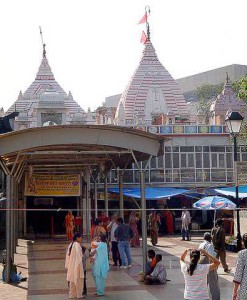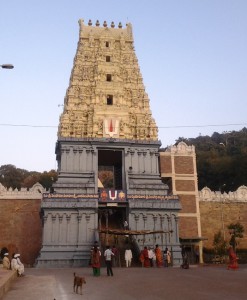No products in the cart.
Suchindram Thanumalayan Temple
Located almost midway between Nagercoil and Kanyakumari, Suchindram is a very famous pilgrim centre. At just 7 kms from Kanyakumari district of Tamil Nadu, Suchindram known as Gnanaranya, is famous for the Thanumalayan Temple. The Thanumalayan Temple built in the 17th century is famous for its sculptural wealth and we’ll known for its quality of workmanship.
It is one of the few temples in the country where the Trinity, ‘Brahma, Vishnu and Ishvara’, are worshipped. The temple enshrines ‘Sri Sthanumalaya’, the Trinity of God (Siva, Vishnu and Brahma). The linga is in three parts. The top represents “Sthanu” name of Siva, the middle “Mal” name of Vishnu, and the base “Aya” name of Brahma. One of the legends of Suchindram is related to chastity of Anasuya, wife of Sage Atri. The legend says that the trimurtis appeared in front of Anasuya as begging brahmins. When she was about to serve they imposed a condition that they would eat only if she served them naked. Through the power of her chastity she converted the three Gods into babies and suckled them. On the plea of Godesses, Anasuya restored the dieties. On the same spot a linga sprouted which still exists.
Images of Vigneswari (a feminine form of Vinayaka), Goddess Aram Valartha Nayaki, Indra Vinayaka, Kala Bhairava and Saakahi Ganapathy are also enshrined. Inscriptions dating back to the 9th century are found in this temple.
The temple was previously controlled by the Namboodiris, one of the main Namboodiri families called the Thekkumon Madam.
The place got the name of ‘Suchindram’ from the Sthala Purana. According to Hindu mythological legend, king of Devas, Indra got relieved of a curse at the place of the main linga in the temple. The term “Suchi” in Suchindram is believed to have derived from the Sanskrit meaning that stands for “purify”. Lord Indra is, thus, supposed to visit the temple for performing “Ardhajama Pooja”, or worship, at midnight every day.
Thirumalai Nayak and the Travancore Maharajas, under whose administration the temple remained till Kanyakumari’s merger with Tamil Nadu, have made many endowments for its upkeep. It is interesting to note that during the reign of Ayilyam Thirunaall Maharajah of Travancore, a lottery scheme was introduced in 1875 A.D., to raise funds for rebuilding a portion of the temple and a sum of over Rs. 40,000 was realised.
Special Features of Suchindram Temple
- Religious significance : The religious significance of the temple is based on the fact that the main statue of linga represent Siva (Sthanu), Vishnu(Maal) and Brahma(Ayan), (giving the temple its name). The representation of the three central gods of Hinduism in one linga makes it unique in India.
- Anthropological significance : Anthroplogically, it may have stemmed from the fact that the main temple at Padmanabhapuram was Vaishnavite, and the Nanjil Pillais and other communities in Nagarcoil were primarily Shaivaites, because of the influences from Chola, Chera and Pandya kingdoms. One of the unique aspects of the temple is the presence of the Gods across the length and breadth of the Hindu pantheon, from Rama and Krishna to Amman and Kandan. The different Hindu sects from Vaishnavism, Shaivism, to more localised Tamil sects like Amman, Kandan are represented in the different idols of the temple.
Apart from the main deity of the temple which is Lord Shiva, Lord Vishnu and Lord Brahma in a single form called Sthanumalyam, this 17th-century temple is famous for the seven-storey white Gopuram is visible from the distance. Its 40m facade is covered with sculptures of Hindu deities. There is also a Hanuman statue, one of the tallest of its type in India which stands 22 feet (6.7m) high, carved out of a single granite block, just outside the temple. The Anjaneya statue is of historical interest as it was buried in 1740 AD fearing an attack by the Tipu Sultan and was forgotten with time. It was then rediscovered in 1930 and restored for public viewing by the then Devaswom Board Commissioner Rajya Seva Praveena Sri M.K. Neelankantha Iyer of Kottarathu Mathom, Moncompu.

There is a Nandi statue as well, made of mortar and lime, which is 13 feet (4.0 m) tall and 21 feet (6.4 m) long and is one of the biggest Nandi statues in India.
The temple is, therefore, an architectural achievement which is known for its quality of workmanship in stone. There are four musical pillars carved out of a single stone, and they stand at 18 feet (5.5 m) in height. These are an architectural and design highlight of the temple grounds. They are in the Alankara Mandapam area, and they emit the sounds of various musical notes when struck. There are an additional 1035 pillars with carvings in the area known as the dancing hall.
The worship timings in the temple extends from 4:30am to 11:30am in the morning while that in the evening lasts for three and a half hours, starting from 5pm to 8:30pm.
The Puja timings as known :
- Abiseka Puja for Moola lingam – 04.15 AM
- Abiseka Puja for Thanumalayan deity – 04.45 AM
- Daily festival Puja – 05.30 AM
- Tharai Abiseka Puja – 06.30 AM
- Mistanga Pija – 07.00 AM
- Uchikkala Puja, Deepa Aradhanai – 11.00 AM
- Deepa Aradhanai, Ahala Pooja & Arthajama Pooja – 06.30 PM
Suchindram Temple Festivals
Apart from the grand celebrations held in the Tamil month of “AVANI” (August) and “CHITHTHIRAI” (April) every year, the last Tuesday in the Tamil month of “MASI” (March) is celebrated as Masi Magam Festival.
The 10 day Marghazi Festival is celebrated in December and begins on Monday with the hoisting of temple flag.
Turmeric powder would is pasted on the holy rope used to hoist the flag in the temple. The people of 18 villages participates in this ceremony. The Kottar Pattariyar community people is known to hand over the flag to the temple authorities.
The temple flag is hoisted at around 10 a.m. on the the first day of the festival, followed by a Thirumurai Peravai procession by Thiruvaduthurai Adheenam, which covers the four Car Streets at Suchindram amid the playing of Thavil and Nadaswaram. This is why the festival is also known as Car Festival. During the car festival, on the ninth day, the temple car is drawn by the devotees along the Car Streets.
The 10-day festival comes to an end with the conduct of Arudra Darsan and Nataraja Moorthy Thirveedhi Ula.
Suchindram Thanumalayan Temple By Road
Suchindram is about 11kms from Kanyakumari and about 7kms from Nagarkoil and, therefore, lying between these two towns. Buses ply from Thirunelveli, Kanyakumari and Trivandram.
Suchindram Thanumalayan Temple By Train
The nearest railway station to Thanumalayan Temple is Nagercoil Junction which is 3kms away from Thanumalayan Temple.
Suchindram Thanumalayan Temple By Air
The nearest airport to Thanumalayan Temple is Thiruvananthapuram International airport, Thiruvananthapuram which is 70Kms away from Thanumalayan Temple.
In addition to that, the Tamil Nadu Transport Corporation (Tirunelveli Division) operates special buses from various destinations to Suchindram on all the 10 days of the famous Car Festival.
Thanumalayan Temple, Suchindram









